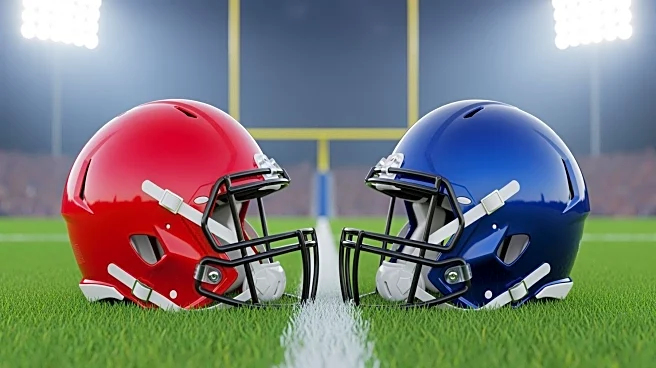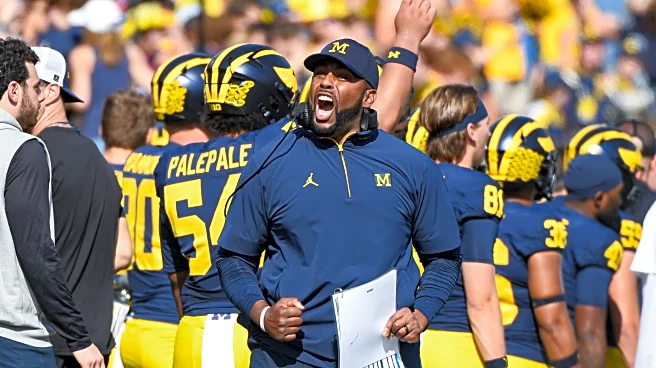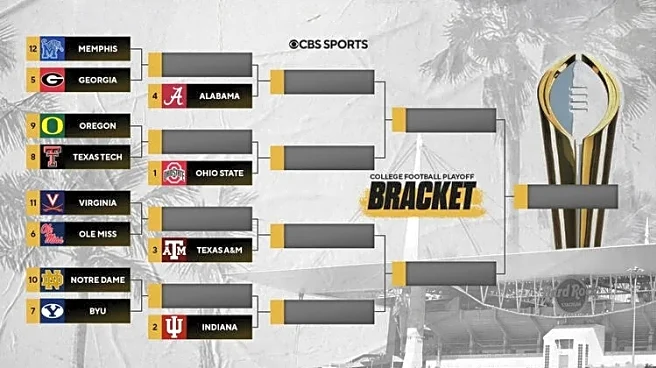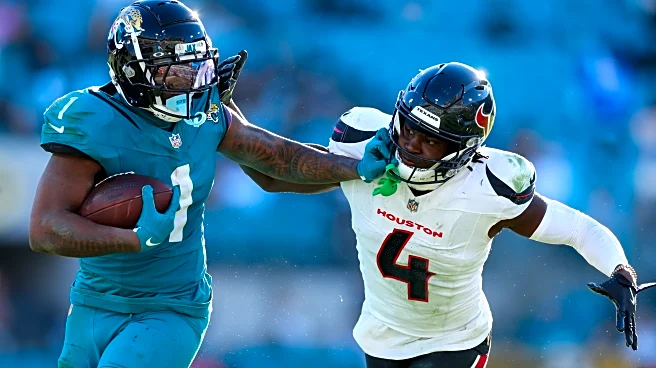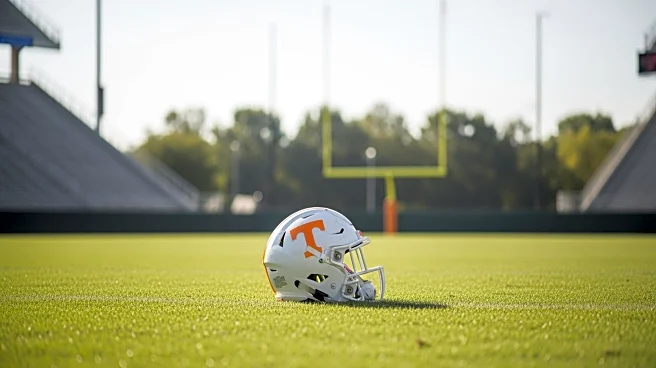What's Happening?
The Florida High School Athletic Association has released its football playoff brackets, setting the stage for South Florida teams to pursue repeat championship runs. In Class 1A Region 4, defending state
champion Chaminade-Madonna is the top seed and will face No. 8 Saint John Paul II of Boca Raton. In Class 4A Region 4, No. 2 American Heritage is set to compete against No. 7 John Carroll. Meanwhile, in Class 5A Region 4, reigning champion St. Thomas Aquinas, seeded No. 1, will take on No. 8 Heritage Palm Bay. These matchups highlight the strength and competitive spirit of South Florida high school football, with teams looking to build on their previous successes.
Why It's Important?
The playoff brackets underscore the dominance of South Florida high school football teams, which have consistently performed at high levels in state competitions. These teams not only bring pride to their schools and communities but also contribute to the region's reputation as a breeding ground for athletic talent. Success in these playoffs can lead to increased visibility for players, potentially opening doors for college recruitment and scholarships. The competitive nature of these matchups also fosters community engagement and school spirit, as local fans rally behind their teams.
What's Next?
As the playoffs progress, teams will focus on strategic preparations to secure victories and advance to the next rounds. Coaches and players will analyze opponents' strengths and weaknesses to optimize their game plans. The outcomes of these games will determine which teams move closer to state championship titles, with potential implications for player recognition and future opportunities. Fans and local communities will continue to support their teams, creating an electrifying atmosphere at games.
Beyond the Headlines
The success of South Florida teams in high school football playoffs may influence broader discussions on youth sports development and investment in athletic programs. Schools might explore ways to enhance training facilities and coaching staff to maintain competitive edges. Additionally, the achievements of these teams could inspire younger athletes to pursue football, contributing to the growth of the sport in the region.
